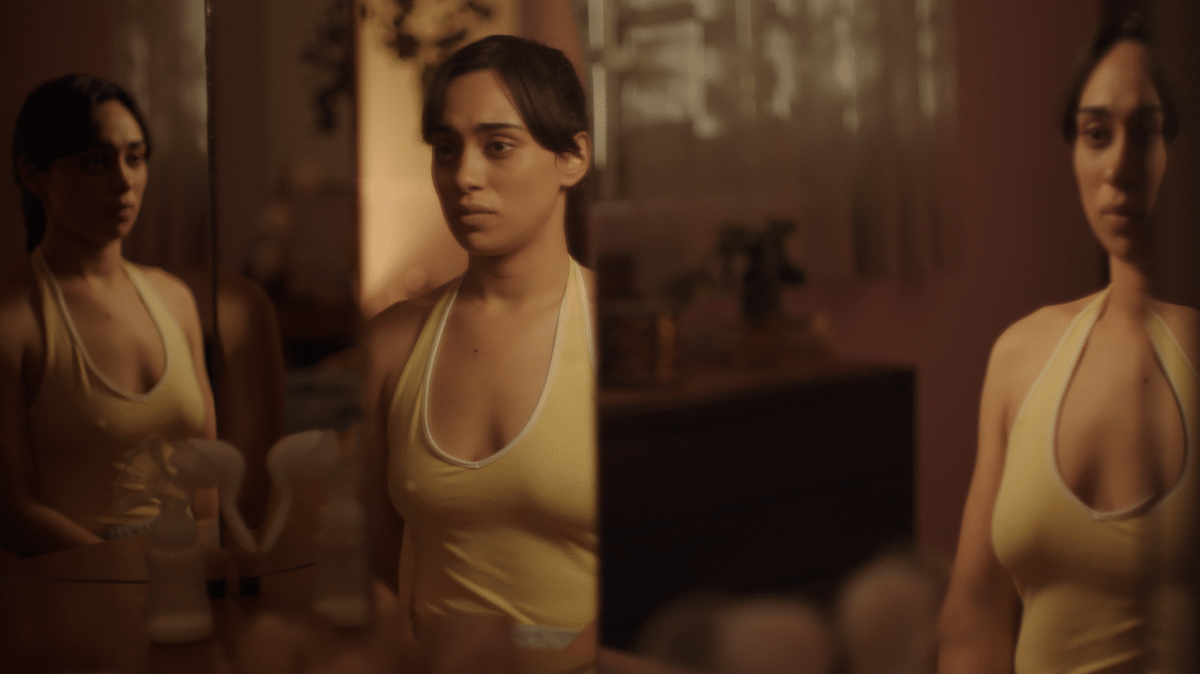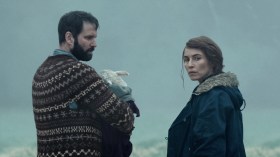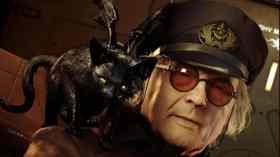La Huesera is a figure of Mexican folklore, described by anthropologist Claudia Pinkola Estés as a bone collector. She searches for the skeletons of forgotten creatures, especially wolves, and sings them back to life. Once alive and free, a wolf revived by La Huesera transforms into a woman.
When La Huesera appears in modern fiction, she’s often a feminist allegory bringing justice to wronged and forgotten women. In Michelle Garza Cervera’s film Huesera: The Bone Woman, she is a troubling metaphor—but the film is too complex to describe her as an evil spirit.
Read: Infinity Pool review: a caustic thriller that will burn its mark on you
Family matters
Natalia Solián plays Valeria, a rebellious carpenter expecting her first child with her partner Raúl (Alfonso Dosal). Solián plays a challenging role with nuance and sympathy. Valeria is caught between her wild youth and the expectations of family life. The story unfolds over a year, from Valeria’s prayers for conception to the difficulties of raising an infant.
Valeria’s immediate family are conservative, candidly voicing their doubts about her parenting ability: it’s rare to see such brutal honesty represented so well in a genre film. Raúl could have easily been written as domineering, but Dosal plays him as an affable but frustrated partner.
On the other side of Valeria’s life is her spinster aunt Isabela (Mercedes Hernández), the only family member who understands her. Tension emerges between Valeria’s mother (Aida López), who prays to Our Lady of Guadelupe for a grandchild, and Isabela’s connections to witchcraft. Then there’s Valeria’s ex-girlfriend Octavia (Marya Batalla), whose reappearance may tempt Valeria back into her old ways. Both groups challenge Valeria’s integrity: she’s both a deceiver and a sellout, neither a housewife nor a punk. The family tension is often more thrilling than the supernatural subplot.
Despite the crowded cast of well-rounded characters, the film finds time to focus on Valeria’s interiority—and also tell a ghost story. Valeria reluctantly forfeits her workshop to build a nursery, giving up pieces of her free-spirited youth to make way for motherhood. But as she tries to steal moments for herself, she begins to see apparitions of a faceless woman with broken joints creeping closer to her home. And as you might expect, nobody believes her.
Read: The Wicker Man: lessons in becoming a cult classic
Bone-cracking soundscapes
It might be a drama-driven film, but the bone woman is really scary. She scurries around with uncanny hydraulic movements, and it’s often hard to tell if a figure lurking out of focus is the heroine or the monster. Valeria’s compulsive knuckle-cracking starts to permeate the whole soundscape, as if she’s haunting herself. Valeria is warned that childbirth ‘feels like your bones are breaking,’ and Solián’s physical performance makes stretching out a crick in her neck look like she’s snapping her own spine.
The set design is phenomenal, subtly augmenting Valeria’s creeping dread. The bruja who initially treats Valeria’s haunting calls Huesera ‘The spider, a weaver. A mother, but also a predator.’ Once you notice the imagery of cobwebs, you’ll begin seeing them everywhere. Valeria has few maternal instincts, but she’s frequently seen weaving something for her child: a macramé crib, a threaded mobile, and a crocheted blanket. Circles and lattices appear in every corner as the bone woman closes in. The bruja’s warning—‘it’s a house, but it’s also a prison’—could spell out the film’s premise too obviously, but Cervera uses it to confront our assumptions about what escape means.
In many ways Huesera follows a globally-reliable formula of a horror film. A woman trapped between states – in this case, a binary of independence and motherhood – is stalked by a monstrous presence. Her family dismisses her as crazy, and more sympathetic characters are too distant to help. A first attempt at exorcising the evil doesn’t work. Elements of the past come to light, identifying an unbreakable connection between the woman and the phantom.
Even the physicality of the titular bone woman pays homage the jerky Butoh choreography of Japanese onryō horror. Drawing creatively from its influences, Huesera stands out as a striking landmark on a well-worn path.
If the film has a fault, it’s the allusions without elaboration: that is, there’s so much left unsaid. Snatches of dialogue and stunning shots are left open for interpretation. It’s an excellent problem for any movie, but especially a ghost story about queer womanhood.
Most horrors overstay their welcome after 100 minutes, but Huesera deftly captures nuances that two-hour behemoths of ‘elevated horror’ tend to fumble with. It’s only been out for a weekend, but it’s already a film that promises to draw you back into the story much like Valeria caught in her web, and make you shiver every time you crack your knuckles.
Rating: MA15+
Run-time: 97 minutes
Huesera: The Bone Woman is streaming now on Shudder.
Actors:
Director:
Format: Movie
Country:
Release:





